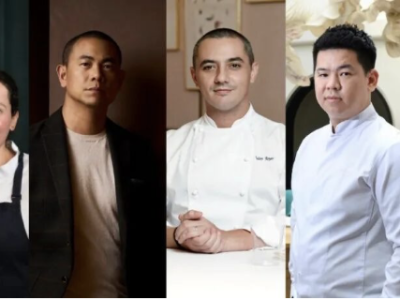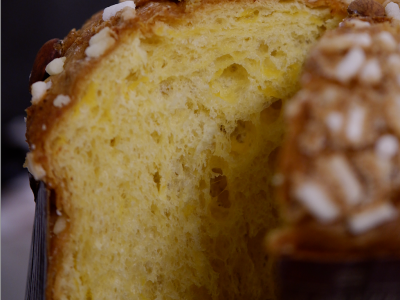The phenomenon of luxury brands stepping into the dining world is gaining momentum globally. From flagship cafés to Michelin-starred collaborations, these ventures blend haute couture with haute cuisine, but do they truly result in a win-win synergy between brand and chef, or is the harmony more elusive than it seems?
This summer, I visited one of the most emblematic cases of this trend: Gucci Osteria in Florence, a Michelin-starred restaurant located within Gucci Garden—a multifunctional brand space that merges boutique, museum, and dining.
 Gucci Osteria、Gucci Garden in [email protected]
Gucci Osteria、Gucci Garden in [email protected]
The concept is simple yet ambitious: to make fashion tasteable. Overseen by chefs Karime López and Takahiko Kondo, in collaboration with Massimo Bottura, the menu opens with a whimsical dish inspired by ‘breakfast’, reflecting Bottura’s signature playfulness and Gucci’s vibrant aesthetic.Karime López, notably, is the first Mexican female chef to earn a Michelin star. Her culinary voice—like Bottura’s other rising protégées, such as Jessica Rosval—is remarkably assured. Their creations consistently exceed expectations.
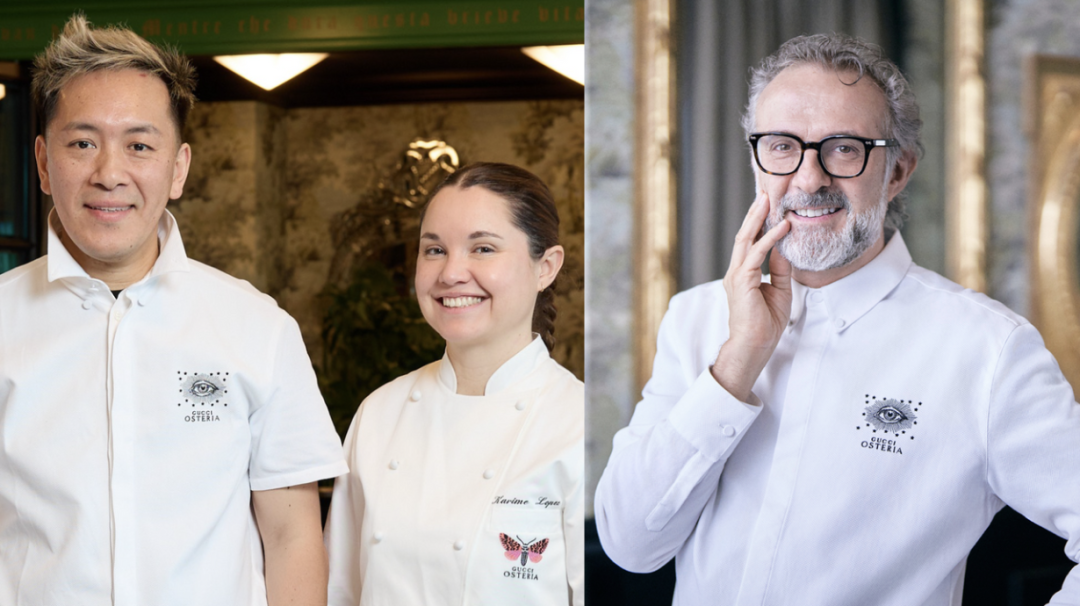 (left to right) Takahiko Kondo, Karime López, Massimo Bottura@gucciosteria
(left to right) Takahiko Kondo, Karime López, Massimo Bottura@gucciosteria
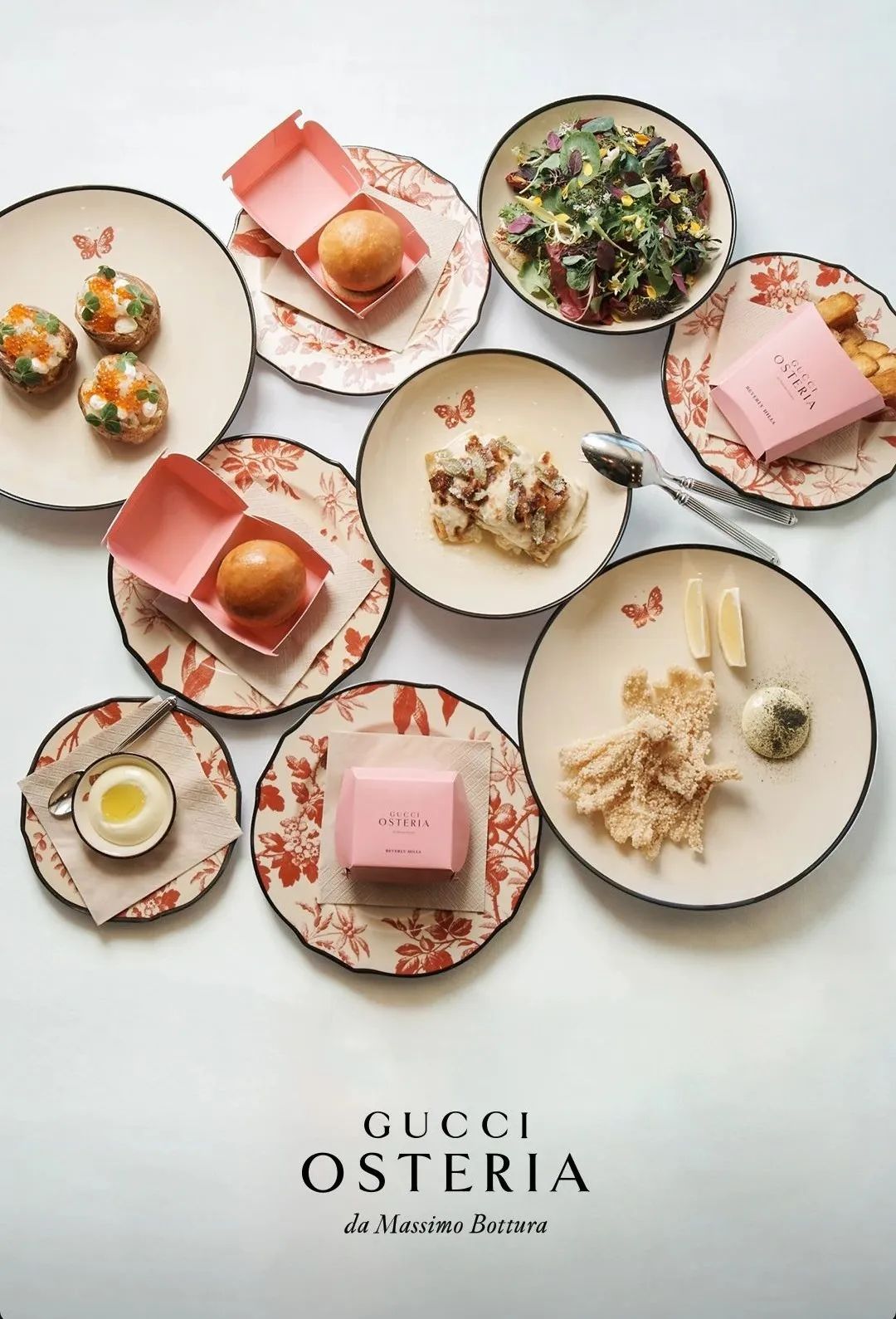 @gucciosteria
@gucciosteria
When a brand finds the right culinary partner, it’s like buying insurance: it ensures consistency and quality. One recalls the short-livedGucci Café in Shanghai, whose unremarkable offerings quickly led to its closure. With Bottura’s involvement, however, Gucci’s culinary comeback would likely take on a completely new form. Beyond Florence, Gucci Osteria has now expanded to Tokyo, Seoul, and Beverly Hills—Shanghai, it seems, is only a matter of time.
Other brands have taken a more structured approach.Bulgari, for instance, has forged a long-term alliance with Italian chef Niko Romito, whose Il Ristorante concept anchors Bulgari Hotels around the world. Minimalist and refined, these restaurants embody “essential Italian aesthetics.” The results speak for themselves: Michelin stars abound - Shanghai, Beijing, and Tokyo each hold one; Dubai, two; and with Romito’s own three-star Reale, the collective tally reaches an impressive eight.Interestingly,Il Ristorante’s menus diverge completely from those at Reale. While Reale focuses on stripping dishes down to their purest essence, Romito applies this same philosophical rigor to Bulgari’s restaurants, using modern techniques to elevate seemingly simple ingredients into elegant expressions of flavor.
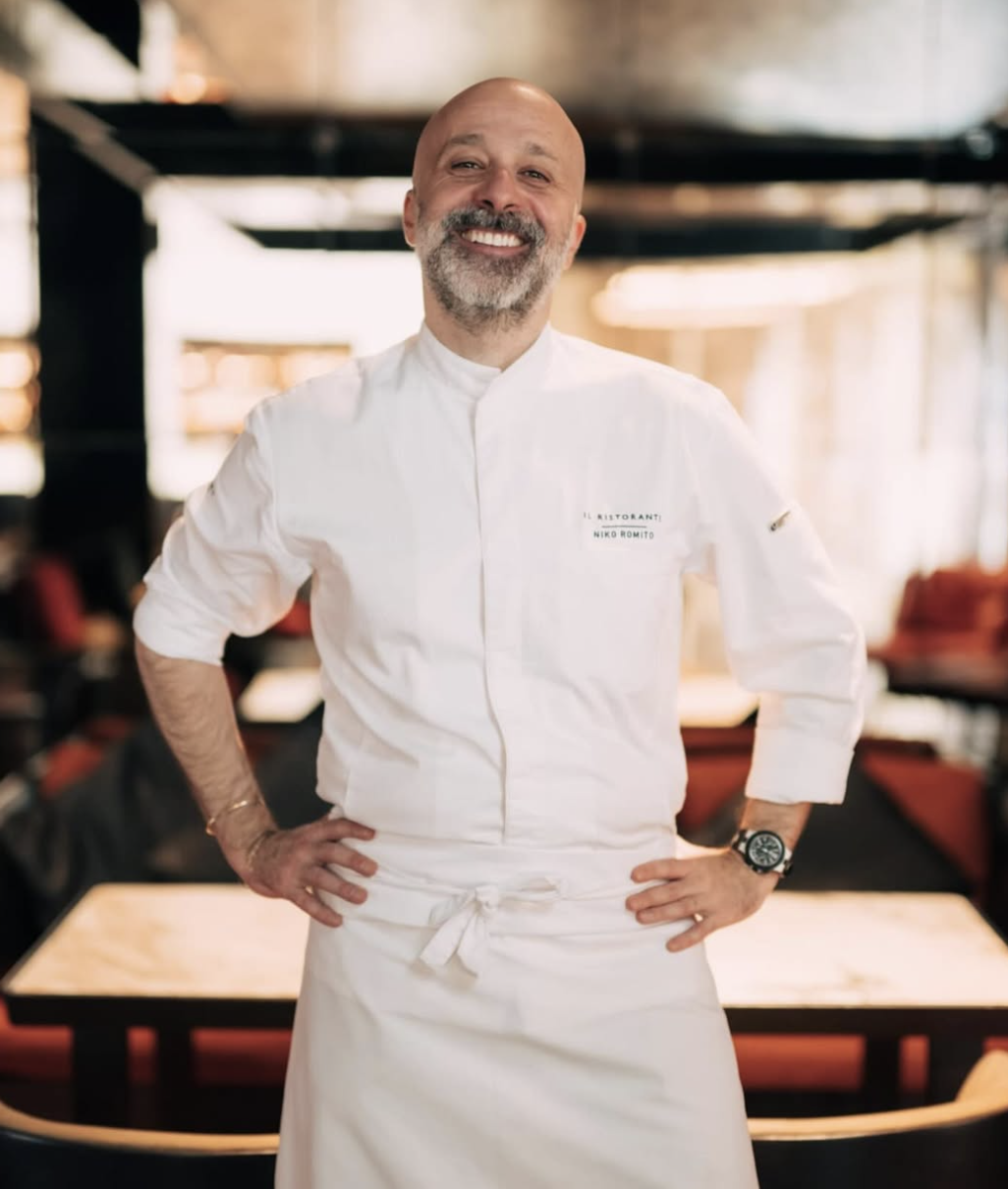 Chef Niko Romito @nikoromito
Chef Niko Romito @nikoromito
Louis Vuitton, on the other hand, favors drama and experiential storytelling. In Shanghai’s Taikoo Hui, the brand launched “The Louis”, a boat-shaped concept store that houses Le Café Louis Vuitton, where both interior design and cuisine echo the spirit of travel and the maison’s heritage in luxury trunks. Each of LV’s culinary ventures is highly localized, often involving different chefs per region.
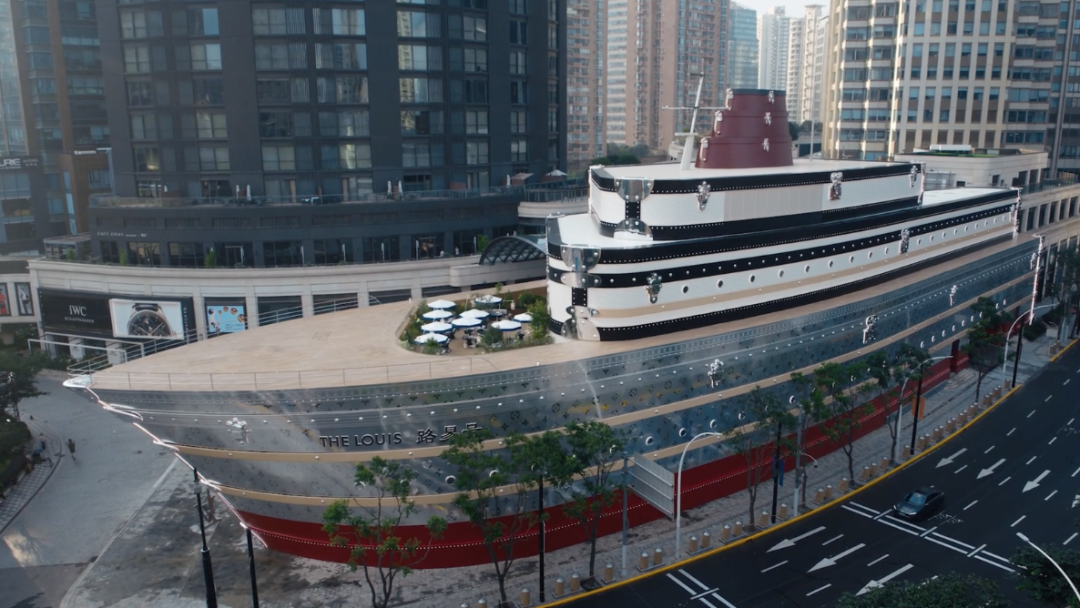
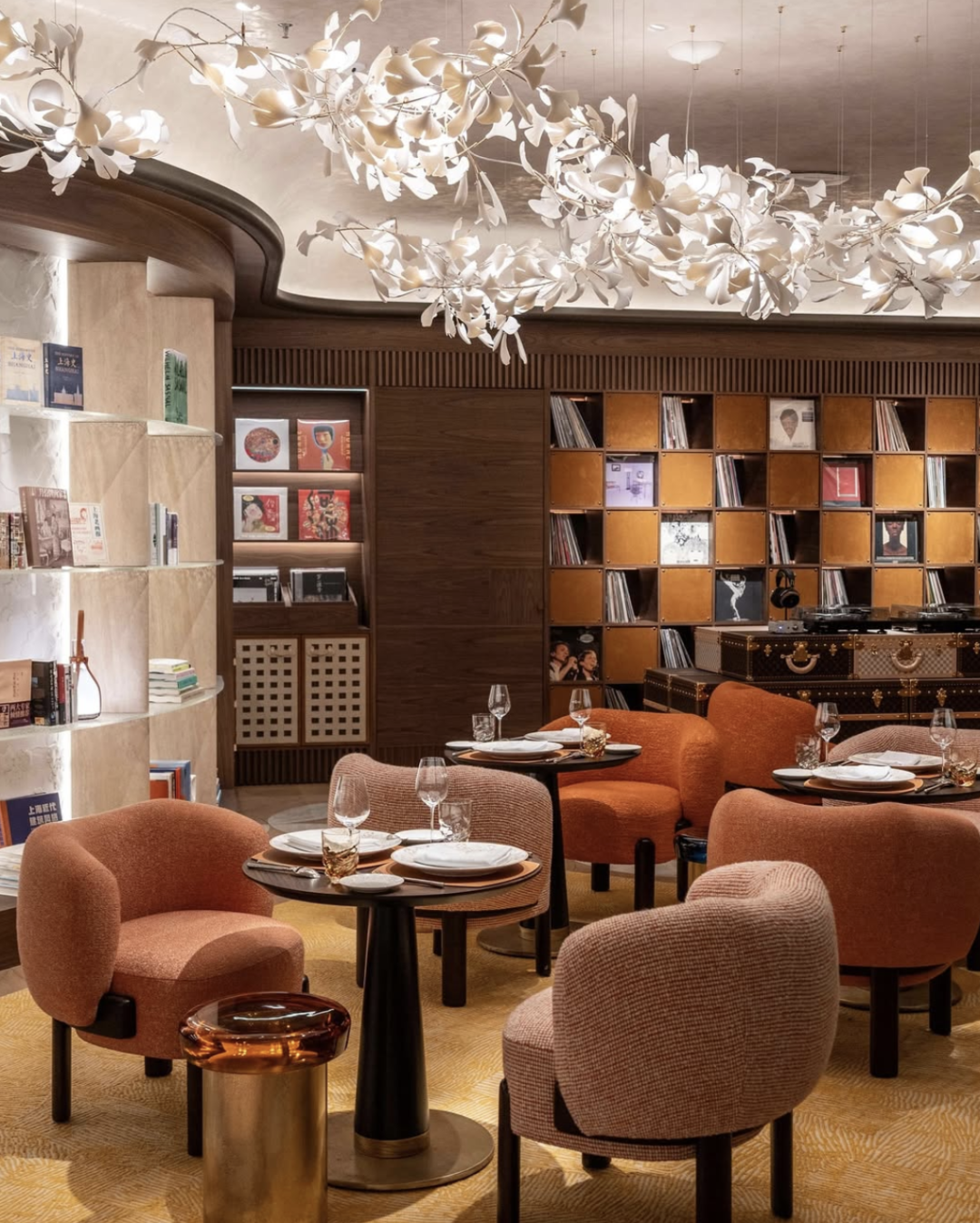
In Milan, DaV by Da Vittorio—a portmanteau of Da Vittorio and Louis Vuitton—is helmed by the Cerea brothers, Enrico and Roberto. In Japan, LV collaborates with the rebellious culinary talent Yosuke Suga. His Sugalabo V in Osaka, a reservation-only restaurant hidden behind Le Café V, caters only to a select few. Nearby in Tokyo, the Suga team also runs the Le Café LV near the Omotesando Maison.
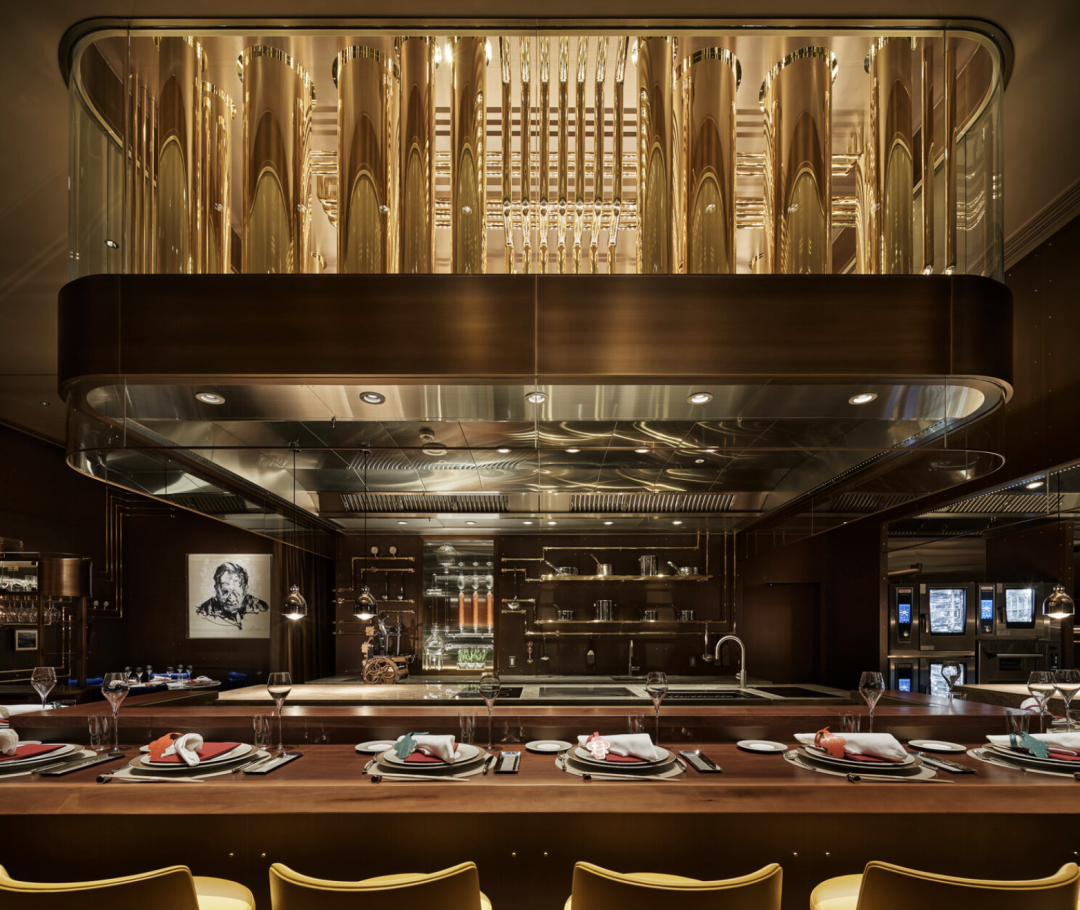 Sugalabo [email protected]
Sugalabo [email protected]
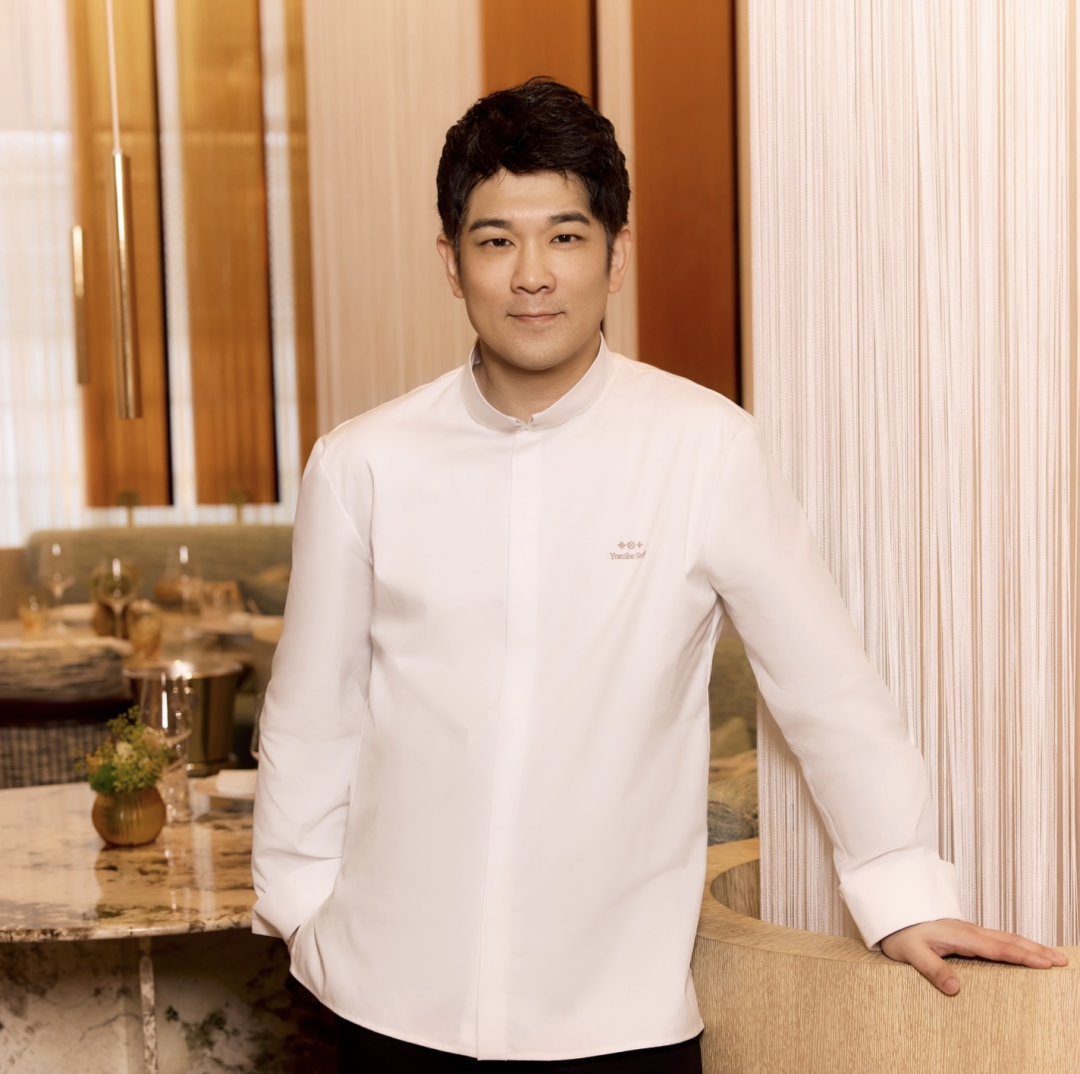 Chef Yosuke Suga @yosuke_suga
Chef Yosuke Suga @yosuke_suga
In June, I also visited San Tommaso 10 in Turin, an extension of Lavazza’s brand heritage and lifestyle philosophy. Located on the site where the coffee house was founded in 1895, the restaurant seamlessly blends local Piedmontese flavors, contemporary design, and brand history. Vintage advertisements line the walls, turning the dining experience into a walk through time, filled with nostalgia and a deep connection to Turin’s cultural identity.
Brand–Chef Partnerships:
The Art of Balance
The success of brand restaurants hinges on the delicate balance between the chef’s creative freedom and the brand’s visual and narrative consistency. Niko Romito’s partnership with Bulgari exemplifies a long-term strategic alliance. He oversees everything from menu development to staff training and sourcing, ensuring global coherence. As Romito himself remarked in an interview:“Bulgari never interferes with my creative process, but we agree on one thing: we must express the true spirit of Italy.”
At Gucci Osteria, Karime López draws on her multicultural background to translate Gucci’s dreamlike aesthetic into an edible language, supported by years of collaboration and trust with Bottura.
Meanwhile at San Tommaso 10, Gabriele Eusebi pays homage to Lavazza’s local roots, weaving modernity into tradition while staying grounded in Piedmontese culinary culture. This is fine bistro dining at its finest—thoughtful, balanced, and evocative.
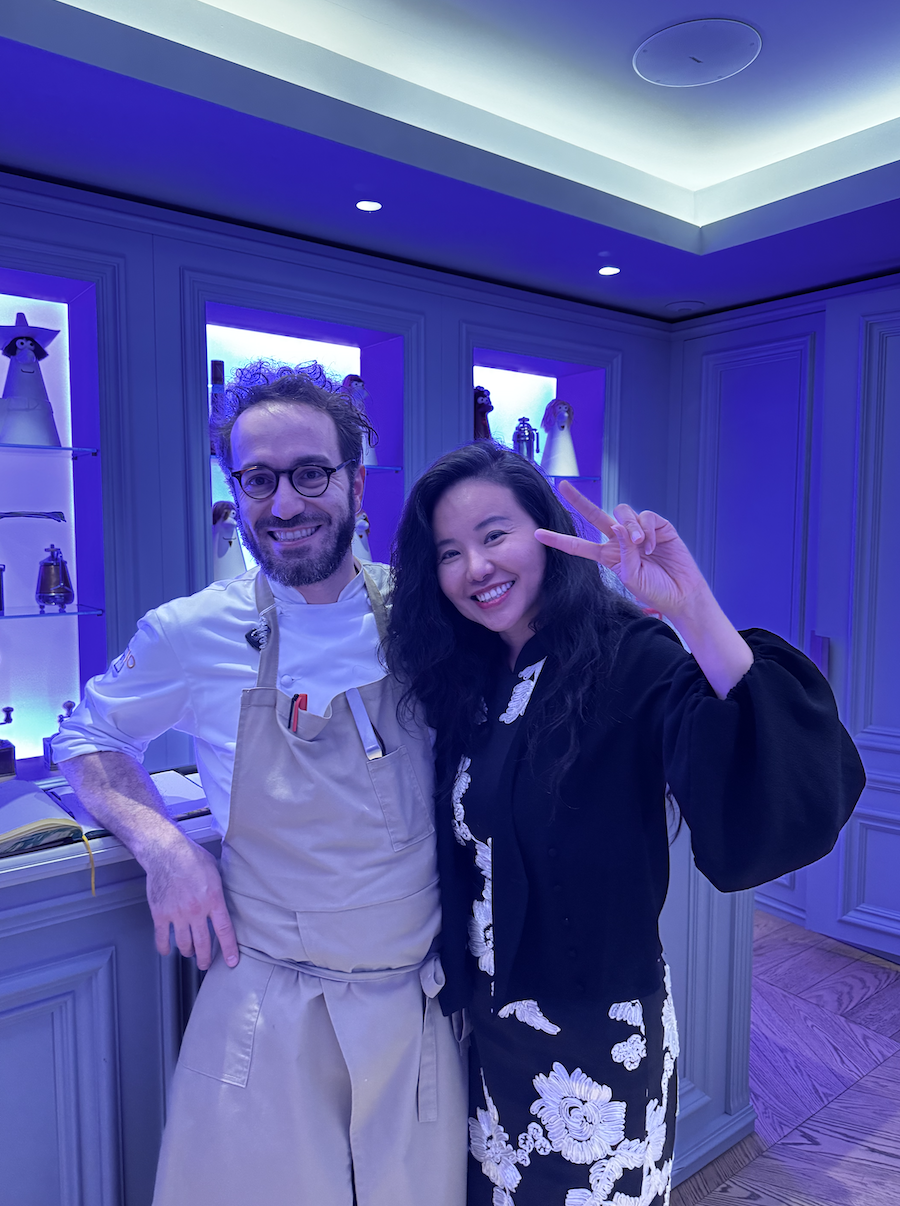 Chef Gabriele Eusebi (Left) and the Author(Right)
Chef Gabriele Eusebi (Left) and the Author(Right)
Ultimately, successful brand-chef collaborations resemble a well-matched marriage: rooted in shared values and mutual respect, not compromise. When creative vision aligns with brand DNA, the result is greater than the sum of its parts.
Beyond Profit:
Culinary Spaces as Brand Strategy
Luxury brands are not entering the restaurant world solely for profit. These ventures are deeply strategic, new ways of shaping customer experience and fostering loyalty. Dining becomes a multi-sensory gateway into the brand universe, transforming abstract heritage into tangible, tasteable narratives.
These venues also offer immense marketing and social value. Take The Louis in Shanghai: it became an instant social media sensation. Restaurants are now vehicles for “experiential branding,” offering consumers immersive engagement beyond the boutique. This year, Prada Rong Zhai in Shanghai has enlisted former Otto e Mezzo chef Riccardo La Perna to relaunch its culinary concept. With new players constantly entering the market, one can only wonder: which fashion house will open its doors to diners next?
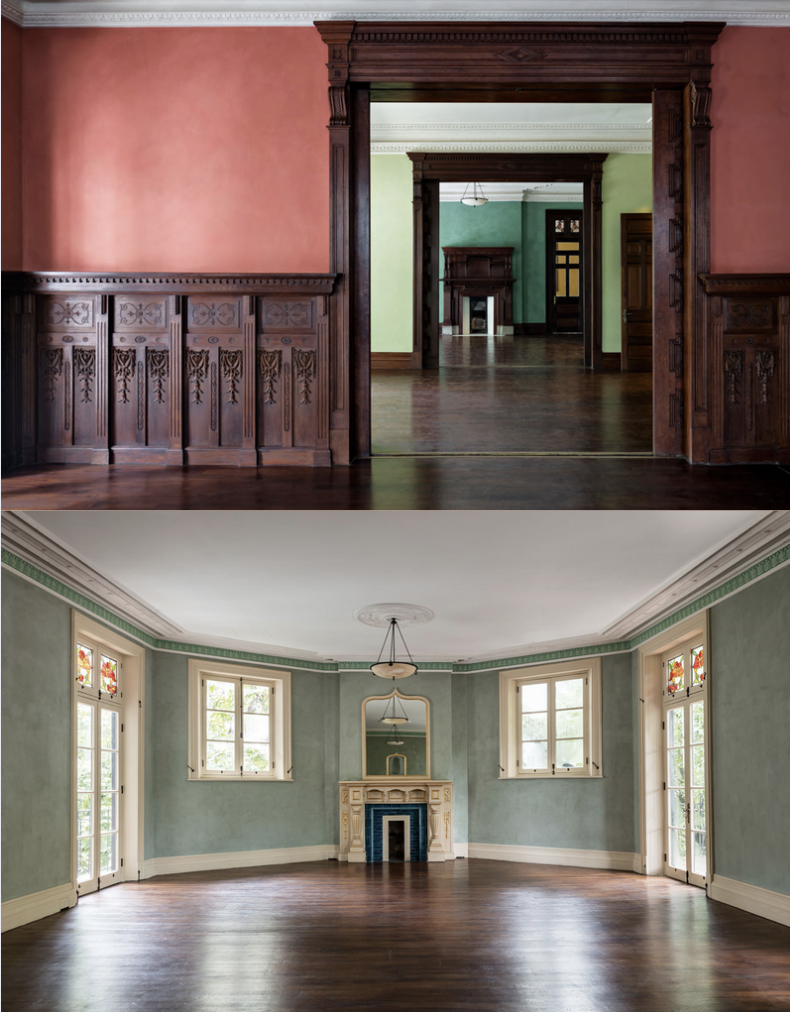 PRADA RONG ZHAI @prada.com
PRADA RONG ZHAI @prada.com
From Armani to Tiffany and Prada, the goal is clear: craft dining spaces that resonate with brand ethos and storytelling power. Yet amid the glamour, one truth remains: no matter how beautiful the interior or iconic the logo, a restaurant must ultimately be judged on its food. Flavor, consistency, and authenticity remain the only criteria that matter.
Author: Jocelyn 華姐
Photo: Jocelyn 華姐 / @gucciosteria / @guccicafé / @lecafe_louisvuitton / @davittorioristorante / @yosuke_saga / louisvuitton.ristorantedav.com / gucciosteria.com / prada.com


